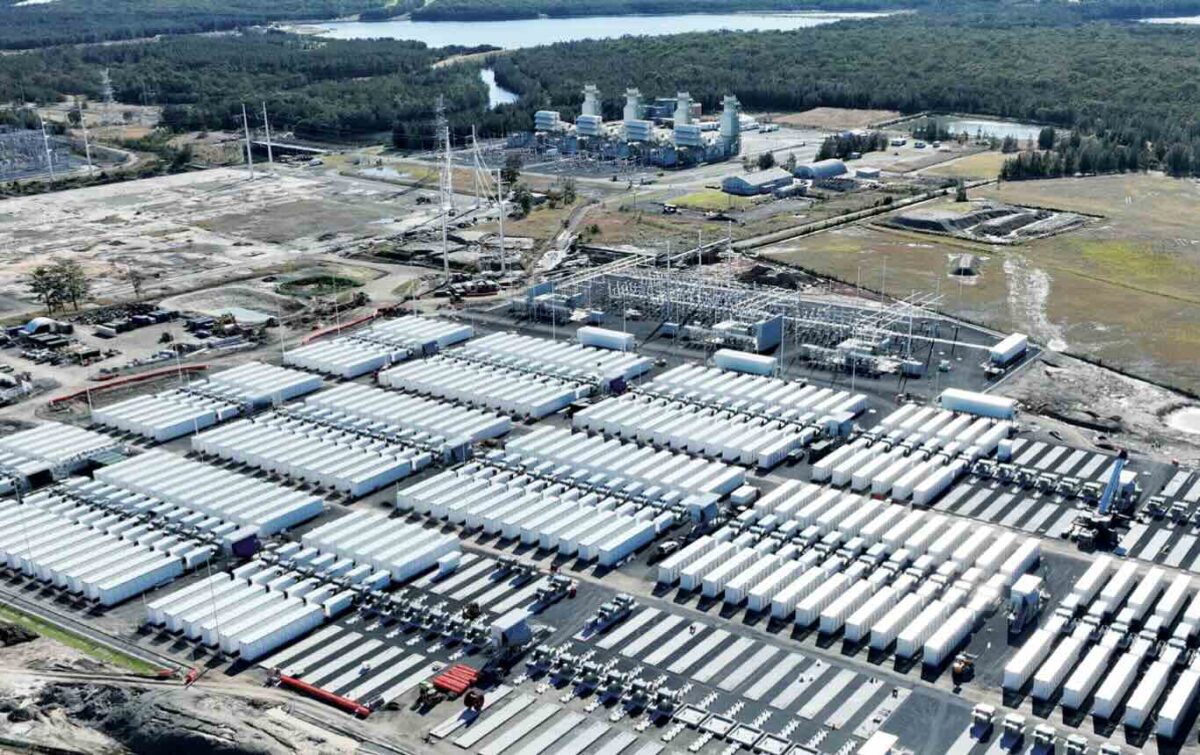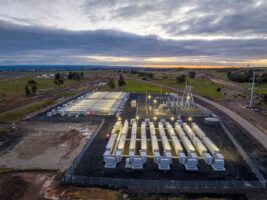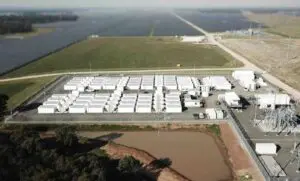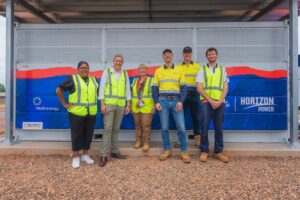The most powerful battery in Australia, and biggest single power unit ever to be connected to the country’s main grid, has completed the first stage of its connection and commissioning process, according to its owner Akaysha Energy.
The Waratah Super Battery will be sized at 850 megawatts (MW) and 1680 megawatt hours (MWh), and its principal role will be to act as a kind of giant shock absorber, allowing the power lines transporting renewable power from the regions to the major load centres on the coast to operate at or near full capacity.
The battery is being built at the site of the already shuttered Munmorah coal fired generator, and will play a key role as the state’s remaining coal fired power plants are retired, even though the closure of the biggest of them all, the 2.88 GW Eraring generator, has been pushed back by at least two years to late 2027.
Nick Finch, the chief Engineer at Akaysha, says the Waratah sub-station has been energised, which paves the way for commissioning works to commence on the project, which he noted has the largest DUID (dispatchable unit identifier, or connection point) in Australia’s main grid.
“This massive milestone is a testament to teamwork and sign of the evolving connection landscape in the NEM. It’s such an exciting time to be in this industry,” he said in a statement published on the company’s website.
“It has taken an incredible amount of collaboration between AEMO, Transgrid, Aurecon, EKS, Powin, and our engineering team.”
Lulu Shao, the director of power systems at EnergyCo, confirmed that the battery had been registered by AEMO.
“Registering on the National Electricity Market is no easy feat, especially for the largest single dispatchable unit on the market and one of the largest grid-scale batteries in the world,” she said in a statement.
There are bigger batteries being built in Australia, in terms of storage, such as Neoen’s 2240 MWh Collie Battery, Synergy’s 2,000 MWh Collie battery and Ark Energy’s 2,200 MWh Richmond Valley battery.
But they are either four hour batteries in the case of the Collie batteries, or eight hour batteries in the case of Richmond Valley, and so have smaller connection capacities. Waratah has a different role to play, so has less storage duration, but a bigger capacity and connection point.
See more information at Renew Economy’s Big Battery Storage Map of Australia.










